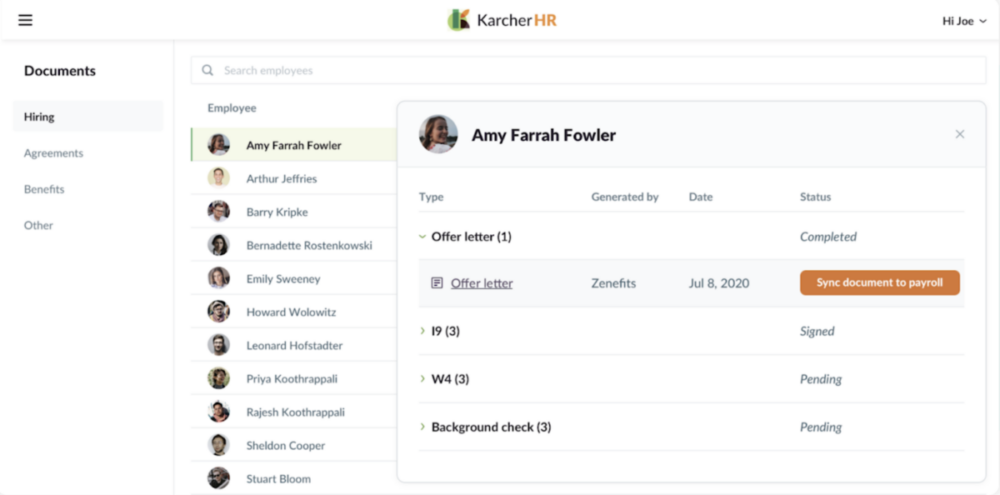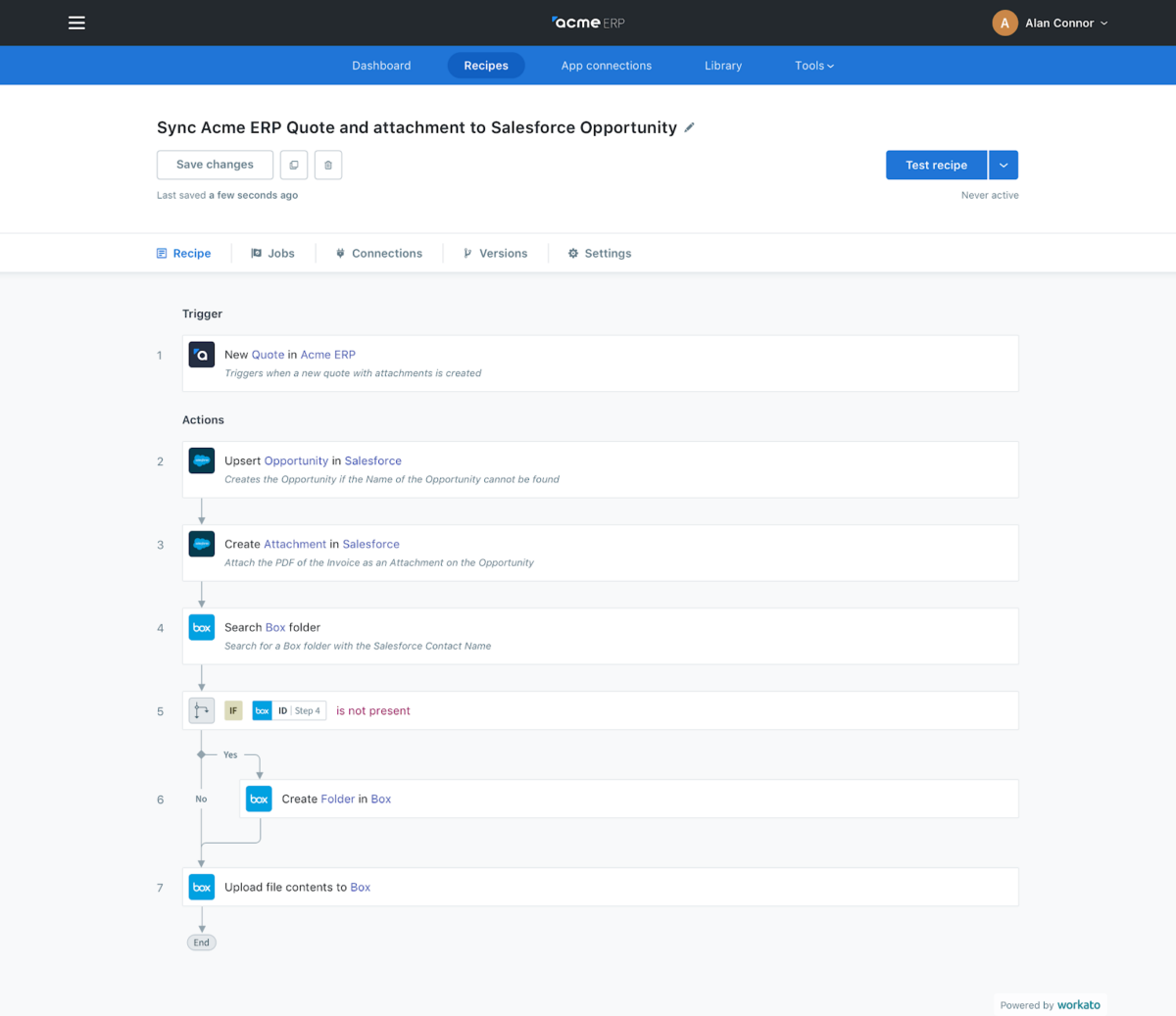Embracing product-led growth can yield numerous business advantages.
Your average deal size will balloon, your retention rate will soar, client referrals will multiply, and your market reputation will leap to new heights.
So, how can you effectively achieve product-led growth? While there are numerous solutions available, investing in a modern embedded iPaaS should be a top priority.
Before diving into the features and benefits of an embedded iPaaS, let’s clarify what an iPaaS and an embedded iPaaS are.
What Is An Embedded iPaaS?
An iPaaS, or an integration platform as a service, is a cloud-based platform that enables you to connect SaaS applications and on-prem systems; once connected, you can develop and deploy data flows that work across these applications. An embedded iPaaS is simply an iPaaS that can be added directly to your product.
The nuance here is how you decide to deploy it.
You have a few options to choose from: an in-line experience or an embedded automation customization.
In-line Experience
This approach involves building the integrations and automations into your product—allowing users to avoid designing, implementing, and maintaining them.
For example, the screenshot below shows the UI of a fictional HRIS. If the user clicks “Sync document to payroll,” the document gets added to your client’s payroll system automatically, thanks to a data sync set up in your embedded iPaaS.

Embedded Automation Customization
This approach offers users more control, allowing them to implement integrations and workflow automations without leaving your platform. For instance, a fictional ERP system might enable users to set up a one-way sync between your system and Salesforce.


Ready to implement product integrations at scale?
Learn how Workato’s modern embedded iPaaS lets you build integrations to your product in a matter of minutes.
Embedded iPaaS Vs Traditional iPaaS
Traditional iPaaS is designed primarily for internal enterprise use. It enables you to create integrations that connect internal systems and allow internal data interoperability. Embedded iPaaS is integrated directly within a host application, allowing SaaS providers to offer integration natively to end users. So the user can configure and manage integrations without leaving the application or needing a separate integration tool.
Embedded iPaaS and traditional iPaaS have unique use cases—you can choose the platform that best suits your integration needs.
Pros And Cons Of An Embedded iPaaS
When should you invest in an embedded iPaaS versus building integrations in-house? The decision largely depends on the nature of your integrations and the technical resources available. Here are some pros and cons to consider:
Pros
- Developer Relief: Embedded iPaaS offers a low-code/no-code UX. This allows non-technical employees to connect apps and implement automations easily, quickly, and independently. Allowing non-technical builders to implement integrations and automations frees up developers from building and maintaining integrations. Thus, developers can focus on building or refining product features to help your platform stand out in the market.
- Quick Market Entry: Using an embedded integration platform, your clients can easily find the apps they want to connect to (via pre-built connectors), sync them with yours, and then build automations that work across them (via pre-built automations)—all in minutes. This enables faster go-to-market for integrations, helping you win new business and retain clients.
- Enhanced Product Value and brand experience: Embedding integration capabilities into a product turns it into a hub for workflow automations, significantly increasing its value. Also, it promotes brand experience. An embedded iPaaS offers clients the same brand experience they’ve come to recognize and love—which can go a long way in making them more comfortable with implementing integrations and automations.
- Flexible deployment options: Embedded iPaaS supports multi-tenant SaaS, cloud-native, hybrid, and customer-specific configurations. You can choose a suitable deployment model that matches your technical environment and business needs.
- Massive data transfer: Embedded iPaaS automates data movement so that it flows seamlessly from source to destination systems at scale in real-time or near real-time.

Cons
- Unnecessary if Few Integrations Required: It may be unnecessary if you have a limited number of integrations, as building a few APIs internally can be manageable. With embedded integration, you may introduce unnecessary costs and complexity for a lightweight use case.
- Better Suited for Complex Use Cases: Integrations can be handled internally if the scope of API integrations is shallow (i.e., you have a few simple use cases for your integrations).
- Learning Curve: Your team and potentially your clients will need to learn how to use the platform. As a result, you may experience slower onboarding and support burden during the early adoption phase.
- Sow down Scalability: Embedded iPaaS platforms require you to build integrations one at a time. This can affect scalability if you need to roll out multiple integrations quickly.
Related: 3 benefits of using an embedded integration platform

How successful B2B companies use an embedded iPaaS
Learn how brands like Tango Card, Unanet, and CyCognito leverage an embedded iPaaS to transform their customer and employee experience.
Features Of An Embedded iPaaS
Once you’ve decided to invest in an embedded iPaaS, you’ll want one that offers the following features:
1. Pre-built Connectors
Your clients likely use a diverse range of applications, leading to numerous integration requests. An embedded iPaaS should offer a high volume of pre-built connectors to meet this demand.
This also takes the sweat off your back, as you don’t have to invest in internal dev resources to build and maintain the connectors. Chris McClave, the CTO of Trakstar, a platform that offers a suite of HR products, explains further:
2. Low-code UI
Relying on engineers to implement integrations and automations might work in the beginning, or in fairly complex scenarios. However, over time, this approach diverts them from focusing on key initiatives and core product features.
That’s where a low-code UI can help.
By offering a low-code UI, your product team, professional services colleagues, and users can leverage an embedded iPaaS to independently, quickly, and easily build automations and integrations into your product.

3. Customizable Platform Bots
Your customers likely spend significant chunks of their workday on a business communications platform like Slack.
An embedded platform can capitalize on this by providing platform bots that act as a productized extension of your platform.
These bots allow users to access data and actions from your product within their business communication platform. They can even bring the automations built into your platform directly to the communication platform.
The VP of Sales and Customer Success at Qstream, an enterprise microlearning solution, elaborated based on his own experience.
4. Enterprise-grade Security
Given that an embedded iPaaS connects various applications and handles business-critical, sensitive data, it must offer robust governance and security features. These include role-based access controls, data masking, and an admin dashboard for monitoring and tracking usage. Additionally, the platform should demonstrate its efficacy in safeguarding your data by complying with regulations like GDPR and SOC 2 Type 2.
Best Practices For Choosing An Embedded iPaaS Solution
Unfortunately, the embedded iPaaS landscape is filled with vendors that fail to address all the necessary features. Instead, many vendors typically fall into one of two ends of the following spectrum:

- Simple: The embedded iPaaS is low-code and intuitive, allowing your team to quickly take a significant number of integrations live. However, these integrations often offer limited functionality, tackle low-value use cases, and fail to scale as your customers’ needs evolve.
- Complex: The embedded iPaaS offers an API management layer, robust security, and governance, and it can tackle complex use cases. However, it requires significant technical expertise to use, making it difficult for citizen integrators to utilize the platform. This limitation prevents the platform from addressing the high volume of product integrations and automations that need to be built.
Your main features of focus in an embedded iPaaS should include:
- Pre-built connectors and automations: Check if the pre-built connectors offered by the iPaaS platform support integration to a wide range of apps, data sources, and systems across multi-cloud and hybrid environments. The pre-configured automations provided should accelerate the automation of both simple and complex business processes.
- Dashboard for real-time monitoring and troubleshooting: The platform should provide visualizations such as graphs and charts to allow network administrators to monitor active and failed synchronization activities. It should also support sending alerts and notifications (through various collaboration tools such as Slack) to allow proactive troubleshooting of connection errors.
- Robust connectivity capabilities: The embedded iPaaS solution should connect to many different data sources and endpoints. This would enable you to connect data from various SaaS apps, IoT devices, third-party APIs, and streaming platforms.
Workato’s Embedded Integration Platform
Workato offers an Embedded Platform that accelerates product innovation and adoption by offering integrations at the speed and depth of your customer’s demand.
With Workato, you can:
- Take embedded integrations to market 3x faster with access to 1000+ pre-built connectors to SaaS applications and databases and hundreds of thousands of automation templates—which we refer to as “recipes”
- Enable fewer technical resources to implement integrations and automations in minutes via our low-code UI – freeing up engineering resources to focus on your core product
- Seamlessly embed our Enterprise Automation Platform directly into your product with the configuration options that meet your needs
- Use a centralized admin dashboard to easily track usage and manage permissions
- Drive new revenue and differentiation by productizing your integrations and automations
- Leverage our patented Workbot to build chatbots that can be incorporated into your product’s workflow automations—or that simply allow clients to access data and actions from your product without leaving their business comms platform
